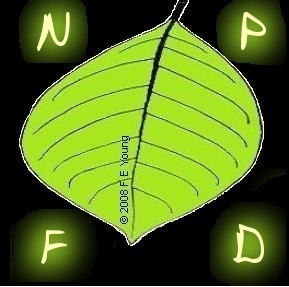




☰ Menu
Literature - T
Takhtajan A (1959) Die Evolution der Angiospermen, Veb Gustav Fischer Verlag, Jena: 202
Teixeira A de P., Assis M A, Siqueira F R, Casagrande J C (2008) Tree species composition and environmental relationships in a Neotropical swamp forest in Southeastern Brazil, Wetlands Ecology and Management, Springer-Verlag, Netherlands, Vol. 16(6): 455, 456
Terwilliger V J (1978) Natural history of Baird's Tapir on Barro Colorado Island, Panama Canal Zone, Biotropica, The Association for Tropical Biology and Conservation, Lawrence, Vol. 10(3): 217
Thorne R F (1973) The "Amentiferae" or Hamamelidae as an artificial group: a summary statement, Brittonia, New York Botanical Garden Press, New York, Vol. 25(4): 397-8
Thorne R F (1992) Classification and geography of the flowering plants, The Botanical Review, New York Botanical Garden Press, New York, Vol. 58(3): 268
Thorne R F (2000) The classification and geography of the flowering plants: dicotyledons of the Class Angiospermae (Subclasses Magnoliidae, Ranunculidae, Caryophyllidae, Dilleniidae, Rosidae, Asteridae and Lamiidae), The Botanical Review, New York Botanical Garden Press, New York, Vol. 66(4): 501
Todzia C A (1994) Type register in Phytologia Memoirs, The University of Texas herbaria, Plant Resources Center, Department of Botany, The University of Texas, Austin & M J Warnock, Huntsville, Texas, USA, Vol. 9: 155
Todzia C A (2001) Lacistemataceae Mart. in Stevens W D, Pool A, Montiel O G, Flora of Nicaragua: Angiospermas (Fabaceae-Oxalidaceae), Missouri Botanical Garden Press, St. Louis, Vol. 85(2): 1166-7
Tokuoka T, Tobe H (2006) Phylogenetic analyses of Malpighiales using plastid and nuclear DNA sequences, with particular reference to the embryology of Euphorbiaceae sens. str. Journal of Plant Research, The Botanical Society of Japan & Springer-Verlag, Netherlands, Vol. 119(6): 599, 600, 602, 604, 608-613
Toriola D, Chareyre P, Buttler A (1998) Distribution of primary forest plant species in a 19-year old secondary forest in French Guiana, Journal of Tropical Ecology, Cambridge University Press, Vol. 14(3): 339
Torre-Cuadros M D L A L, Herrando-Perez S, Young K R (2007) Diversity and structural patterns for tropical montane and premontane forests of central Peru, with an assessment of the use of higher-taxon surrogacy, Biodiversity and Conservation, Springer-Verlag, Netherlands, Vol. 16(10): 2982
Torres R B (1997) Lacistemaceae in Melo, M M R Fuiza de et al. (eds.), Flora Fanerogamica da Ilha do Cardoso (Sao Paulo, Brasil), Instituto de Botanica, Sao Paulo: 105-107
Torres R B, Ramos E (2005) Lacistemataceae in Flora Fanerogâmica do Estado de São Paulo, Instituto de Botânica, São Paulo, Vol. 4: 231-236
Tucker A O, Poston M E, Illtis H H (1989) History of the LCU Herbarium: 1894-1986, Taxon, Vol. 38(2): 196-203
Tulasne L (1852) Podostemacearum monographia, Series: Archives du Muséum d'histoire Naturelle, Paris: 32-33
Turland, N. J., Wiersema, J. H., Barrie, F. R., Greuter, W., Hawksworth, D. L., Herendeen, P. S., Knapp, S., Kusber, W.-H., Li, D.-Z., Marhold, K., May, T. W., McNeill, J., Monro, A. M., Prado, J., Price, M. J. & Smith, G. F. (eds.) 2018: International Code of Nomenclature for algae, fungi, and plants (Shenzhen Code) adopted by the Nineteenth International Botanical Congress Shenzhen, China, July 2017. Regnum Vegetabile 159. Glashütten: Koeltz Botanical Books.
Turland N (2019) The Code Decoded, Berlin Botanic Garden and Botanical Museum, Berlin, Germany available from Advanced Books
Tyree M T, Yang S, Cruiziat P, Sinclair B (1994) Novel methods of measuring hydraulic conductivity of tree root systems and interpretation using AMAIZED, Plant Physiology, Dartmouth Journal Services, Waterbury, Vol. 104(1): 189-190